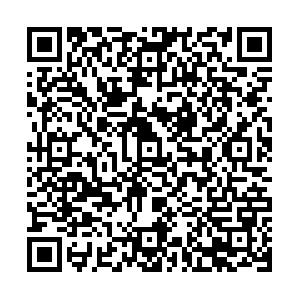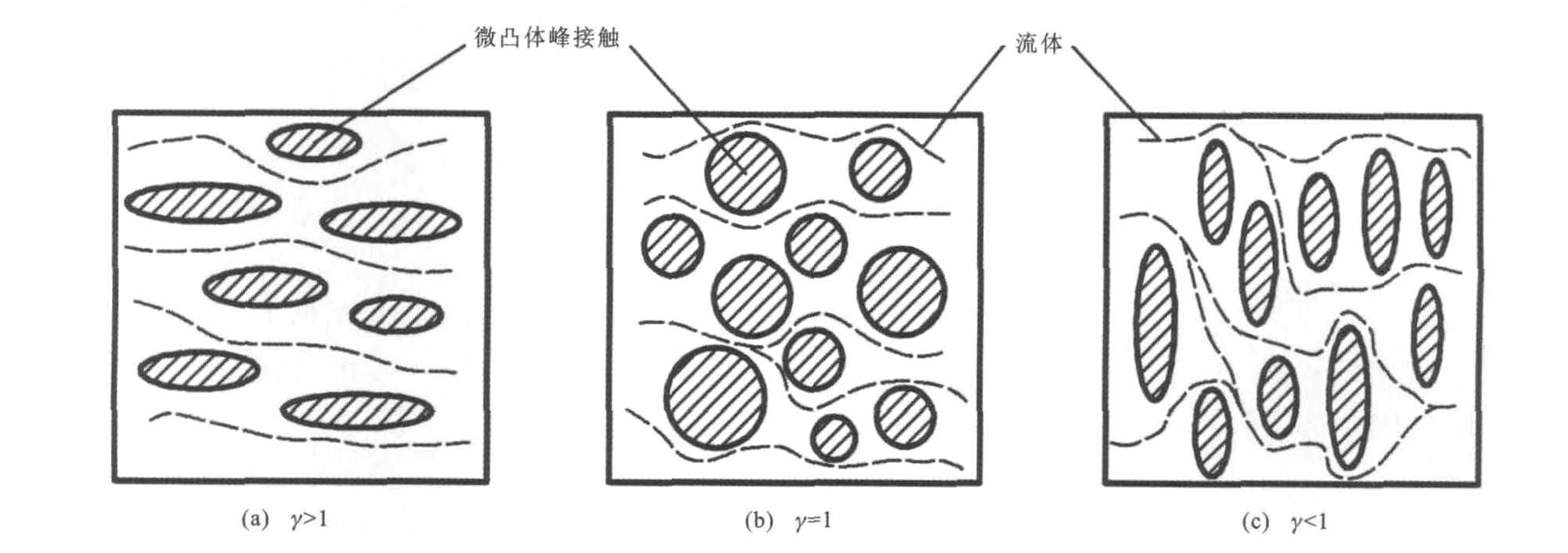Numerical analysis method of wheel/rail adhesion under water lubrication for high-speed railway
-
摘要: 将多重网格法引入水介质存在时高速轮轨黏着问题的数值求解中, 研究了轮轨间存在水介质和不考虑轮轨表面粗糙度时, 速度与载荷对水膜厚度的影响。数值分析结果表明: 水膜厚度与轮轨表面粗糙度处于同一等级, 粗糙度的影响不可忽略。基于数值分析结果, 应用部分膜润滑理论研究了考虑表面粗糙度与轮轨间存在水介质时的接触机理, 分析了轮轨黏着系数随速度变化的情况。计算结果表明: 随着速度的提高, 黏着系数急剧降低, 其数值低于0.1。JD-1试验速度在60、90、120km·h-1时, 黏着系数的试验结果与数值结果吻合较好, 最大相对误差不超过8%, 因此, 利用数值方法可较好地预估黏着系数。Abstract: Multigrid method was introduced into the calculation of wheel/rail adhesion under wet condition at high speed, and the influence of train speed and contact pressure on water film thickness was investigated under wet condition without thinking about surface roughness. Numerical analysis result shows that surface roughness and water film thickness have same order, and surface roughness is not ignored. Partial lubrication theory was applied to study the contact characteristics of wheel and rail under water lubrication based on the numerical analysis result, and the relationship between train speed and adhesion coefficient was investigated. Computation result indicates that with the increase of train speed, adhesion coefficient decreases rapidly, and its values are below 0.1. The comparison of experimental result obtained by JD-1 testing machine at the simulation speeds of 60, 90 and 120 km·h-1 and numerical analysis result shows that the maximum relative error of adhesion coefficient is less than 8%, so the numerical analysis method is accurate to estimate adhesion coefficient.
-
表 1 计算参数
Table 1. Computation parameters
参数 取值 R/m 0.43 E/Pa 2.06×1011 υ 0.3 w/t 14 u/(km·h-1) 145 σ1, σ2 0.114 7, 0.104 0 γ 1 ka 0.001 η0/(Pa·s) 0.001 3 表 2 水润滑状态下的速度与接触流体膜厚关系
Table 2. Relationship between train speed and film thickness under water lubrication
速度/(km·h-1) 量纲为1的中心膜厚 中心膜厚/μm 量纲为1的最小膜厚 最小膜厚/μm 145 0.012 41 0.790 0 0.011 42 0.726 9 260 0.018 46 1.175 1 0.016 52 1.050 0 380 0.023 93 1.523 3 0.021 01 1.337 4 表 3 水润滑状态下接触压力与膜厚的关系
Table 3. Relationship between contact pressure and film thickness under water lubrication
接触压力/MPa 量纲为1的中心膜厚 中心膜厚/μm 量纲为1的最小膜厚 最小膜厚/μm 760 0.038 07 1.5 0.004 06 1.288 2 000 0.004 06 1.1 0.003 59 0.970 -
[1] 沈志云, 张卫华, 金学松, 等. 轮轨接触力学研究的最新进展[J]. 中国铁道科学, 2001, 22(2): 1-14. doi: 10.3321/j.issn:1001-4632.2001.02.001SHEN Zhi-yun, ZHANG Wei-hua, JIN Xue-song, et al. Advances in wheel/rail contact mechanics[J]. China Railway Science, 2001, 22(2): 1-14. (in Chinese). doi: 10.3321/j.issn:1001-4632.2001.02.001 [2] OHYAMA T. Tribological studies on adhesion phenomena between wheel and rail at high speeds[J]. Wear, 1991, 144(1/2): 263-275. [3] 大山忠夫. 高速域におけゐ車輪/レ一ル間の粘着力に及ぼす表面污染の影響(第2報)——接觸領域におけゐ摩擦系數と接觸剛性が粘着力に及ぼす影響[J]. 潤滑, 1987, 33(7): 548-554.TADAO O. Influence of surface contamination on adhesion force between wheel and rail at high speeds(2nd report)—effects of friction coefficients and tangential contact rigidity on adhesion force[J]. Japan Society of Lubrication Engineers, 1987, 33(7): 548-554. [4] 大山忠夫, 大野薰, 中野敏. 高速域におけゐ車輪/レ一ル間の粘着力に及ぼす表面污染の影響(第1報)——微量油付着狀態におけゐ粘着力の舉動[J]. 潤滑, 1987, 33(7): 540-547.TADAO O, KAORU O, SATOSHI N. Influence of surface contamination on adhesion force between wheel and rail at high speeds(1st report)—behavior of adhesion force under the surfaces contaminated with a small amount of liquid paraffin[J]. Japan Society of Lubrication Engineers, 1987, 33(7): 540-547. [5] CHEN H, BAN T, ISHIDA M, et al. Experimental investigation of influential factors on adhesion between wheel and rail under wet conditions[J]. Wear, 2008, 265(9/10): 15041511. [6] KUMAR S, 钱立新. 轮轨接触参数的实验室模拟及轮轨冲角、蛇形运动、油水污染、真实接触面积对黏着蠕滑性能的影响[J]. 中国铁道科学, 1984, 5(1): 12-35. https://www.cnki.com.cn/Article/CJFDTOTAL-ZGTK198401001.htmKUMAR S, QIAN Li-xin. Laboratory simulation of wheel and rail contact related parameters and influence of contact area, angel of attack, kinematic oscillation and water, oil contamination on wheel and rail adhesion[J]. China Railway Science, 1984, 5(1): 12-35. (in Chinese). https://www.cnki.com.cn/Article/CJFDTOTAL-ZGTK198401001.htm [7] ARIAS-CUEVAS O. Low adhesion in the wheel-rail contact[D]. Delft: Delft University, 2010. [8] WANG W J, ZHANG H F, WANG H Y, et al. Study on the adhesion behavior of wheel/rail under oil, water and sanding conditions[J]. Wear, 2011, 271(9/10): 2693-2698. [9] 大山忠夫, 中野敏. 高速域におけゐ車輪/レ一ル間の粘着力に及ぼす表面污染の影響(第3報)——潤滑油膜が形成された場合の粘着力の舉動[J]. 潤滑, 1987, 33(10): 751-758.TADAO O, SATOSHI N. Influence of surface contamination on adhesion force between wheel and rail at high speeds(3rd report)—behavior of adhesion force under the formation of lubricant film[J]. Japan Society of Lubrication Engineers, 1987, 33(10): 751-758. [10] CHEN H, BAN T, ISHIDA M, et al. Adhesion between rail/wheel under water lubricated contact[J]. Wear, 2002, 253(1/2): 75-81. [11] CHEN H, ISHIDA M, NAKAHARA T. Analysis of adhesion under wet conditions for three-dimensional contact considering surface roughness[J]. Wear, 2005, 258(7/8): 1209-1216. [12] 杨翊仁, 张继业, 金学松. 轮轨水介质接触的完全数值分析方法[J]. 铁道学报, 1998, 20(4): 31-36. doi: 10.3321/j.issn:1001-8360.1998.04.006YANG Yi-ren, ZHANG Ji-ye, JIN Xue-song. Numerical analysis on the contact of wheel and rail with water medium[J]. Journal of the China Railway Society, 1998, 20(4): 31-36. (in Chinese). doi: 10.3321/j.issn:1001-8360.1998.04.006 [13] 杨翊仁, 张继业, 赵华. 水介质对轮轨黏着特性的影响[J]. 铁道学报, 2000, 22(2): 31-34. doi: 10.3321/j.issn:1001-8360.2000.02.007YANG Yi-ren, ZHANG Ji-ye, ZHAO Hua. Effects of water medium on adhesion of wheel and rail[J]. Journal of the China Railway Society, 2000, 22(2): 31-34. (in Chinese). doi: 10.3321/j.issn:1001-8360.2000.02.007 [14] 裴有福. 高速铁路轮轨粘着机理的研究[D]. 北京: 清华大学, 1996.PEI You-fu. An investigation into the mechanisms of wheel/rail adhesion[D]. Beijing: Tsinghua University, 1996. (in Chinese). [15] VENNER C H, NAPEL W E, BOSMA R. Advanced multi-level solution of the EHL line contact problem[J]. Journal of Tribology, 1990, 112(3): 426-432. doi: 10.1115/1.2920277 [16] 黄平, 温诗铸. 多重网格法求解线接触弹流问题[J]. 清华大学学报: 自然科学版, 1992, 32(5): 26-34. doi: 10.3321/j.issn:1000-0054.1992.05.001HUANG Ping, WEN Shi-zhu. Solution of the elastohydrody-namic lubrication line contact problems with multigrid method[J]. Journal of Tsinghua University: Science and Technology, 1992, 32(5): 26-34. (in Chinese). doi: 10.3321/j.issn:1000-0054.1992.05.001 [17] 杨沛然. 流体动力润滑数值分析[M]. 北京: 国防工业出版社, 1999.YANG Pei-ran. Numerical Analysis of Hydrodynamic Lubrication[M]. Beijing: National Defence Industry Press, 1999. (in Chinese). [18] 陈国定. 重载、部分弹性流体动力润滑研究[D]. 西安: 西安交通大学, 1988.CHEN Guo-ding. Study on heavy load and partial elasto-hydrodynamic lubrication[D]. Xi'an: Xi'an Jiaotong University, 1988. (in Chinese). [19] PATIR N, CHENG H S. Application of average flow model to lubrication between rough sliding surfaces[J]. Journal of Lubrication Technology, 1979, 101(2): 220-229. doi: 10.1115/1.3453329 [20] PATIR N, CHENG H S. An average flow model for deter-mining effects of three-dimensional roughness on partial hydrodynamic lubrication[J]. Journal of Lubrication Technology, 1978, 100(1): 12-17. doi: 10.1115/1.3453103 [21] GREENWOOD J A, TRIPP J H. The contact of two nomi-nally flat rough surfaces[J]. Proceedings of the Institution of Mechanical Engineering, 1971, 185(1): 625-633. [22] 金学松, 刘启跃. 轮轨摩擦学[M]. 北京: 中国铁道出版社, 2004.JIN Xue-song, LIU Qi-yue. Tribology of Wheel and Rail[M]. Beijing: China Railway Publishing House, 2004. (in Chinese). -





 下载:
下载:






